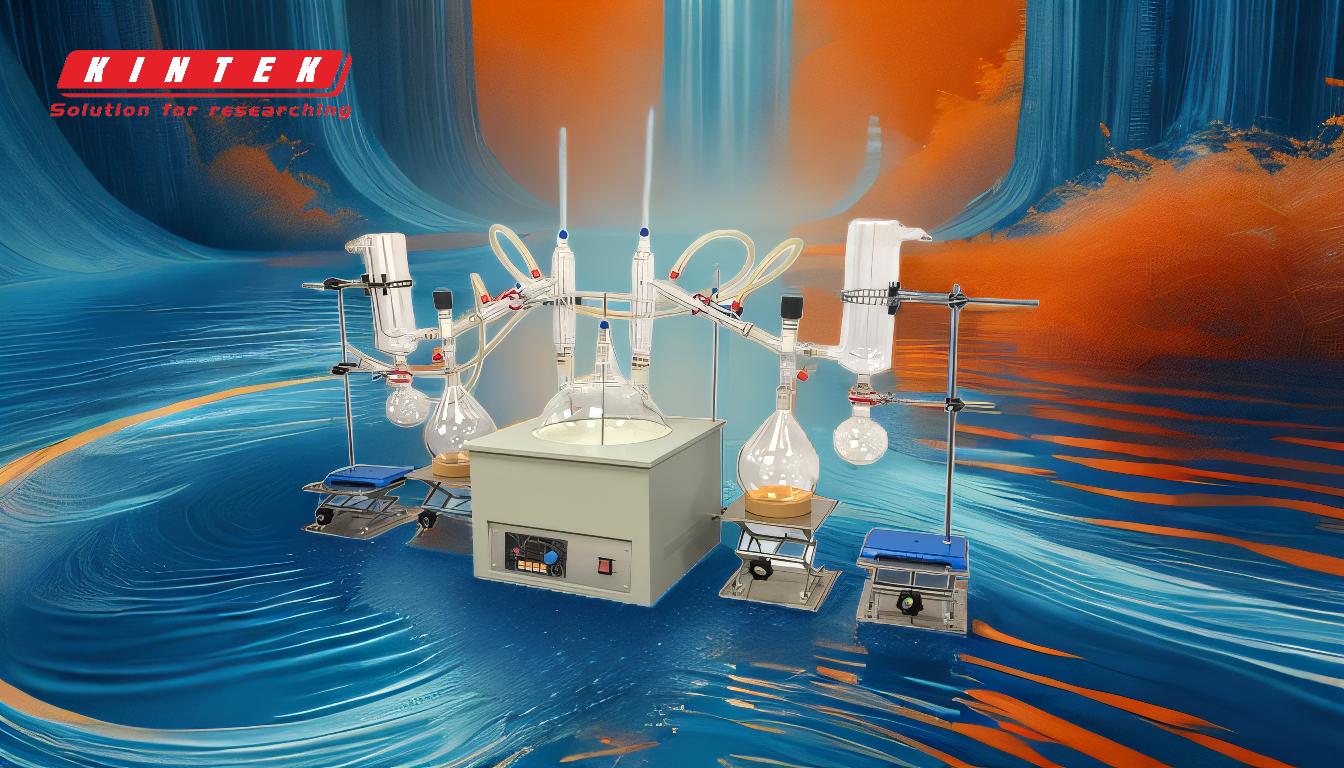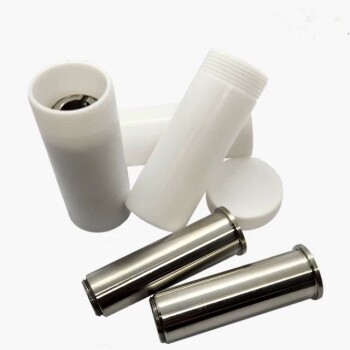Short-path distillation is a specialized distillation technique used to separate and purify components of a mixture, particularly those that are heat-sensitive or have high boiling points. It operates under reduced pressure, allowing the distillate to travel a short distance (often just a few centimeters) between the boiling and condensing surfaces. This method is highly efficient for isolating and refining compounds, such as edible oils, by leveraging differences in volatility. The process involves heating the mixture to vaporize its components, which then condense on a nearby cooled surface. This technique is ideal for preserving the integrity of delicate compounds, making it a preferred method for applications in the food, pharmaceutical, and chemical industries.
Key Points Explained:

-
Definition and Purpose of Short-Path Distillation:
- Short-path distillation is a distillation technique designed to separate mixtures based on differences in the volatility of their components. It is particularly useful for heat-sensitive materials, such as edible oils, as it operates under reduced pressure, lowering the boiling points of the components and minimizing thermal degradation.
- The process is named for the short distance the distillate travels, typically just a few centimeters, between the heating and condensing surfaces. This minimizes exposure to heat and reduces the risk of decomposition.
-
How Short-Path Distillation Works:
- The mixture is placed in a boiling flask and heated under reduced pressure. The reduced pressure lowers the boiling points of the components, allowing them to vaporize at lower temperatures.
- The vaporized components rise a short distance and come into contact with a cooled condenser, where they condense back into liquid form. The condensed liquid is then collected separately from the remaining mixture.
- The process relies on the principles of evaporation and condensation, with the condenser positioned close to the heating surface to ensure efficient separation.
-
Key Components of Short-Path Distillation Equipment:
- Boiling Flask: Holds the mixture to be distilled and is heated to vaporize the components.
- Condenser: A cooled surface located a short distance from the boiling flask, where the vaporized components condense.
- Vacuum System: Maintains the reduced pressure required for the process, ensuring lower boiling temperatures and minimizing thermal stress on the components.
- Magnetic Stirrer: Often used to agitate the mixture, ensuring even heating and preventing localized overheating.
-
Advantages of Short-Path Distillation:
- Preservation of Heat-Sensitive Compounds: The reduced pressure and short travel distance minimize thermal degradation, making it ideal for delicate materials like edible oils.
- Efficiency: The process is faster and more efficient than traditional distillation methods, especially for separating heavier molecules.
- High Purity: The close proximity of the condenser to the boiling surface ensures high separation efficiency, resulting in a purer distillate.
- Versatility: Suitable for a wide range of applications, including the purification of edible oils, essential oils, and pharmaceutical compounds.
-
Applications in Edible Oil Processing:
- Short-path distillation is widely used in the food industry for refining edible oils. It helps remove impurities, such as free fatty acids, pigments, and odors, while preserving the nutritional quality of the oil.
- The process is particularly beneficial for oils that are sensitive to high temperatures, such as olive oil, fish oil, and other unsaturated fats. It ensures that the final product retains its flavor, aroma, and health benefits.
-
Operational Considerations:
- Pressure Control: Maintaining the correct vacuum pressure is critical to the success of the process. Too high a pressure can result in incomplete separation, while too low a pressure may cause excessive evaporation of volatile components.
- Temperature Management: Careful control of heating and cooling temperatures is essential to prevent thermal degradation and ensure efficient condensation.
- Equipment Maintenance: Regular cleaning and maintenance of the distillation unit are necessary to prevent contamination and ensure consistent performance.
-
Comparison with Other Distillation Techniques:
- Unlike traditional distillation methods, which may require higher temperatures and longer processing times, short-path distillation is optimized for efficiency and preservation of sensitive compounds.
- It is more suitable for high-boiling-point and heat-sensitive materials compared to techniques like steam distillation or molecular distillation.
-
Challenges and Limitations:
- Equipment Cost: Short-path distillation units can be expensive due to the need for precise vacuum and temperature control systems.
- Complexity: The process requires careful monitoring and control of multiple parameters, making it more complex than simpler distillation methods.
- Scalability: While effective for small-scale applications, scaling up short-path distillation for industrial use can present challenges in maintaining consistent performance.
In summary, short-path distillation is a highly effective technique for refining edible oils and other heat-sensitive materials. Its ability to operate under reduced pressure and minimize thermal degradation makes it a valuable tool in industries where preserving the integrity of delicate compounds is critical.
Summary Table:
| Aspect | Details |
|---|---|
| Definition | Distillation technique for heat-sensitive compounds under reduced pressure. |
| Key Components | Boiling flask, condenser, vacuum system, magnetic stirrer. |
| Advantages | Preserves sensitive compounds, high efficiency, high purity, versatile. |
| Applications | Edible oil refining, essential oils, pharmaceuticals. |
| Operational Considerations | Pressure control, temperature management, regular maintenance. |
| Challenges | High equipment cost, complexity, scalability limitations. |
Discover how short-path distillation can optimize your processes—contact us today!










